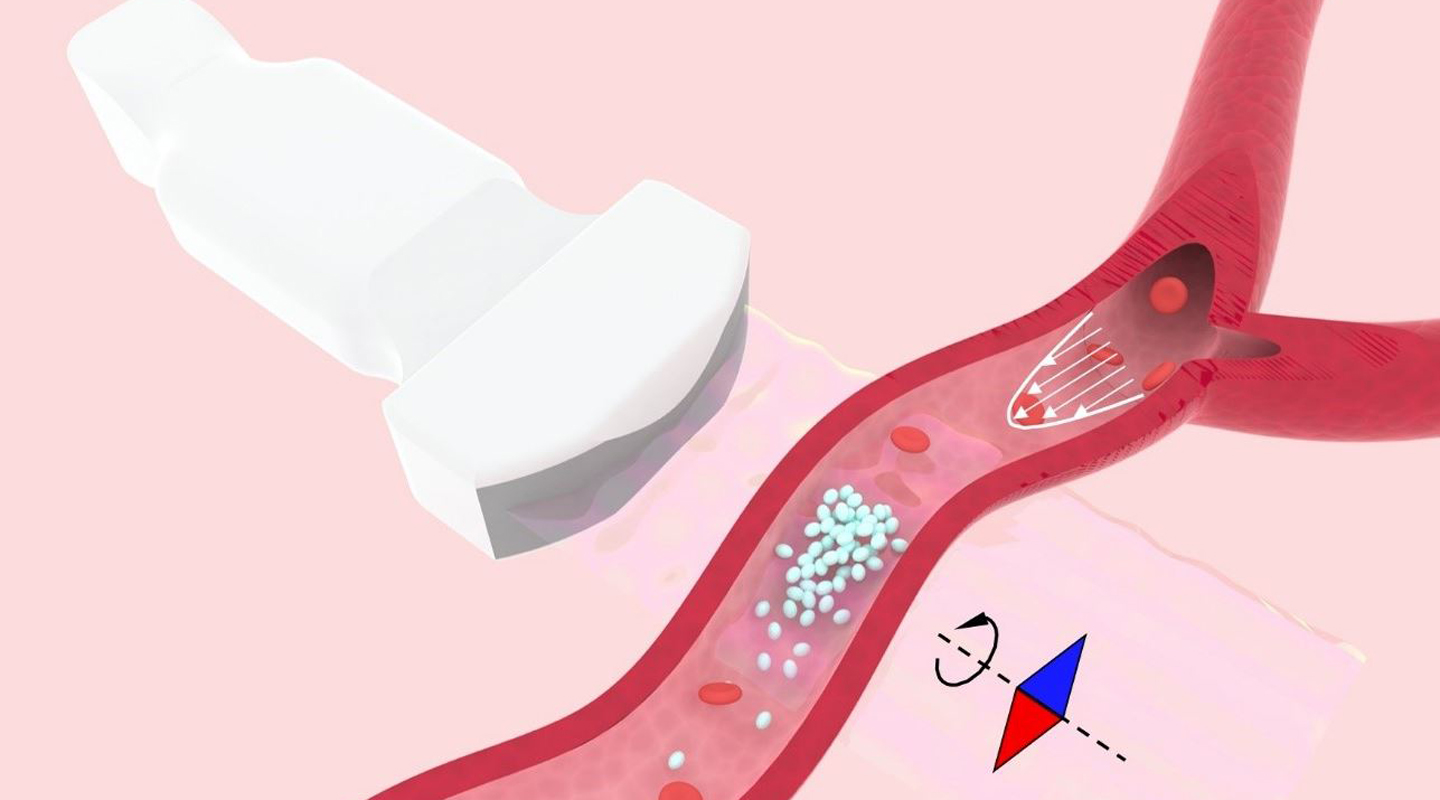Dear readers, With the launch of e-newsletter CUHK in Focus, CUHKUPDates has retired and this site will no longer be updated. To stay abreast of the University’s latest news, please go to https://focus.cuhk.edu.hk. Thank you.
Microrobotic Technology Ever So Better
CUHK team develops new strategies for microrobotic swarms in blood vessels

A research team led by Prof. Zhang Li of the Department of Mechanical and Automation Engineering has developed a new strategy to control and track a microrobotic swarm in blood vessels in real-time.
Microrobot swarms are small-scale mobile agents that can actively pass through narrow and confined spaces, such as a capillary, to perform specific tasks. Nevertheless, real-time control and localization of microrobots in blood vessels remain challenging as their formation, navigation and localisation become very different in pulsatile flowing environments and are difficult to track.
In order to tackle these challenges, the research team has proposed a new strategy to navigate a nanoparticle microswarm in real-time under ultrasound Doppler imaging guidance, a non-invasive test that can be used to estimate and analyse blood flow, for active endovascular delivery.
Driven by a rotating permanent magnet, a magnetic microswarm was formed and navigated near the boundary of vessels. The rotating microswarm affects the motion of blood cells and disrupts normal blood flow, enabling Doppler imaging and real-time tracking from multiple viewing configurations. The dynamic Doppler feedback and the fast response of magnetic control approach benefit the targeted navigation in different flowing conditions, including stagnant environments, flowing blood, and also pulsatile flow.
‘Our ultimate goal is to apply micro/nanorobotics technology for translational biomedicine, such as endovascular intervention in the vascular system deep inside the human body, in a minimally invasive manner,’ Professor Zhang remarked. ‘This collaborative work with CU Medicine and ETH Zurich paves way for solving medical problems that are currently difficult to manage with conventional tools.’
‘Although there are many uncertainties and challenges ahead, with the joint expertise of engineering and radiology in our collaborative research, we are looking forward to seeing promising advances in the future,’ said Prof. Simon Yu of the Department of Imaging and Interventional Radiology.
Related results have been recently published in Science Advances, a prestigious international scientific journal.